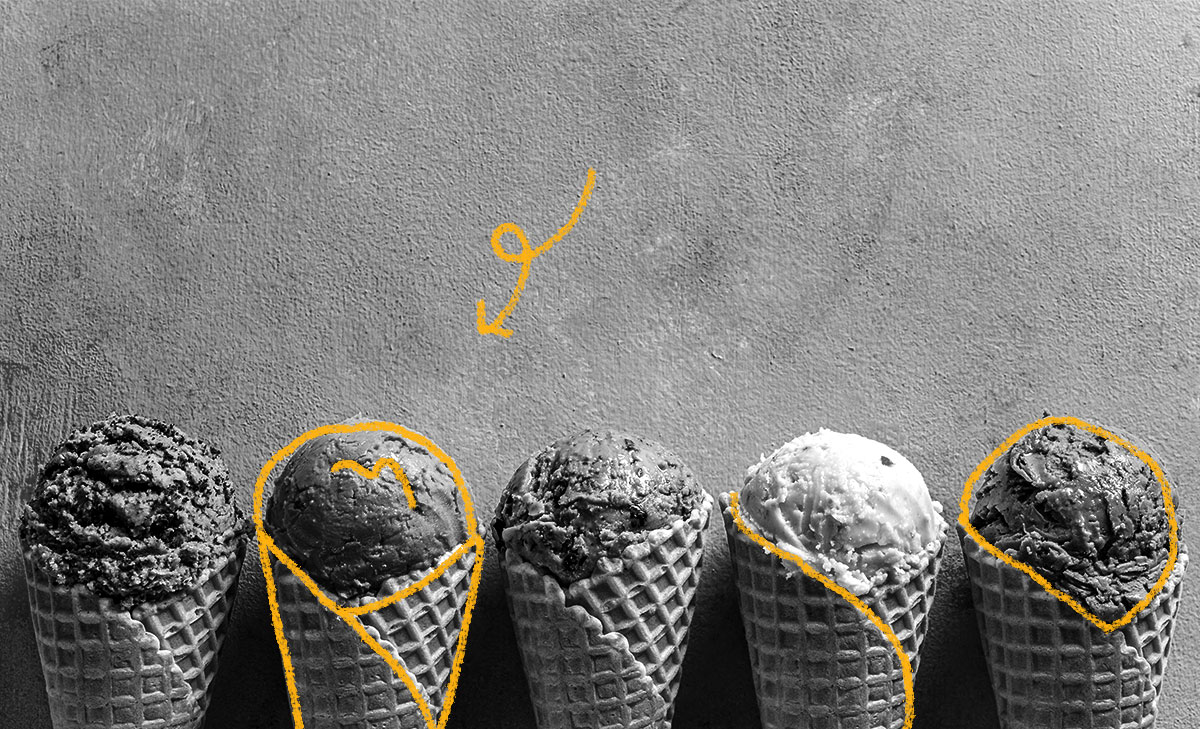An etching of the Parisian Café Frascati from 1807 includes a depiction of a woman licking something out of a handheld container – some historians consider this the first pictorial evidence of ice cream cones. Between 1846 and 1894, several cookbooks debuted that included recipes for wafer cones filled with iced cream. In the latter half of the 19th century, ice cream was served at stores out of small glass containers called “penny licks” – but the need for an edible container was clear. Italo Marchiony of New York City filed a patent for an ice-cream-cup-making machine that created biscuit cups in 1903 (although it turned out that Antonio Valvona of Manchester, England had patented a similar machine a year before). However, how the ice cream cone came to be remains a mystery. A popular version of the story holds that Ernest Hamwi was making zalabia, a wafer dessert, next to an ice cream stand at the 1904 St. Louis World’s Fair and suggested combining the two desserts. The idea caught on, of course, and he was later named the official creator of the ice cream cone. However, Abe Doumar of Lebanon, Nick and Albert Kabbaz of Syria, David Avayou from Turkey, and Frank and Charles Menches of Ohio all claimed that they either gave Hamwi the idea or invented the cone themselves. It’s unclear which of the claims, if any, are true. In fact, historians now believe that the ice cream cone was probably not first invented at the 1904 World’s Fair, but they do think that it was popularized there.

Your go-to guide for weird history facts
Subscribe to the FREE daily email that makes learning about history fun.


